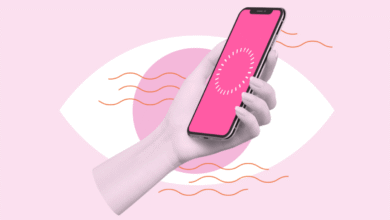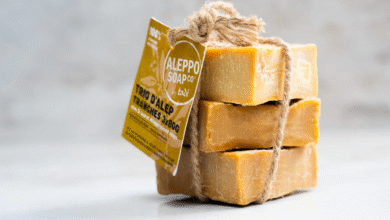Is a Gerstenkorn Ansteckend? Here’s What You Should Know

Gerstenkorn ansteckend? Find out if a stye is contagious, how it spreads, prevention tips, treatment options, and how to keep your eyes healthy in this expert-backed guide.
A Gerstenkorn, or stye as it’s commonly known in English, is one of those annoying little eye problems that seem to pop up out of nowhere. You wake up one morning, and there it is—a red, swollen bump on your eyelid, tender to the touch and not-so-easy on the eyes. But beyond the discomfort and cosmetic inconvenience, many people have one pressing question on their minds: “Ist ein Gerstenkorn ansteckend?”
Let’s break it down and explore everything you need to know about whether a Gerstenkorn is contagious, how it develops, what you should and shouldn’t do, and how to treat or prevent it. We’ll tackle this topic from every angle so you can feel confident about handling it like a pro.
What Exactly is a Gerstenkorn?
Before we dive into whether or not a Gerstenkorn is ansteckend (contagious), let’s talk about what it actually is. A Gerstenkorn is a small, painful lump on the eyelid, usually filled with pus. It’s essentially a localized infection of the sebaceous glands at the base of an eyelash.
There are two types of Gerstenkorn: one that appears on the outside of the eyelid (external stye) and another that forms inside the eyelid (internal stye). The external one is more common and tends to look a bit like a pimple. Regardless of where it shows up, a Gerstenkorn is caused by a bacterial infection, most commonly Staphylococcus aureus.
You might notice redness, swelling, sensitivity to light, and even tearing. The area can feel quite sore, and in some cases, the bump can rupture and release pus. Though they often go away on their own, Gerstenkorns can be persistent and uncomfortable if not properly managed.
Is a Gerstenkorn Actually Ansteckend?
Now let’s address the million-dollar question: “Ist ein Gerstenkorn ansteckend?” The short answer is yes—a Gerstenkorn can be contagious. That’s because it’s caused by bacteria, and bacteria can spread from person to person, or even from one eye to the other.
If you touch the infected area and then touch another part of your face, your other eye, or even another person, the bacteria can transfer. This doesn’t necessarily mean the other person will develop a stye too, but it certainly increases the risk. Especially if they already have a weakened immune system or poor eye hygiene.
However, the Gerstenkorn itself isn’t what’s contagious; it’s the bacteria that cause it. That’s an important distinction. You won’t catch a Gerstenkorn from being near someone, but you could potentially get the bacteria if you’re sharing towels, pillows, or makeup.
How Does a Gerstenkorn Develop?
Understanding how a Gerstenkorn forms can help you prevent it. Basically, the glands around your eyelashes produce oils that help keep your eyes lubricated. Sometimes, these glands get blocked by dead skin, makeup, or dirt. When that happens, bacteria can get trapped inside and start to multiply.
Once the bacteria settle in, your body reacts by sending white blood cells to the area, which leads to inflammation and pus formation. That’s why a stye looks red and swollen. It’s your body’s way of fighting off the invaders.
Factors like stress, poor hygiene, using old makeup, or touching your eyes frequently can all increase your risk. Even underlying conditions like blepharitis (inflammation of the eyelid) or chronic dry eyes can make you more prone to Gerstenkorns.
Can You Prevent Spreading a Gerstenkorn?
Absolutely! If you currently have a Gerstenkorn, there are several steps you can take to prevent spreading it to others or to your other eye. First and foremost, don’t touch it. As tempting as it might be to poke or squeeze it, resist the urge. Touching a Gerstenkorn can spread the bacteria.
Wash your hands frequently, especially after touching your face. Avoid sharing personal items like towels, pillowcases, or cosmetics. Change your pillowcases regularly and avoid using eye makeup until the stye has fully healed. If you wear contact lenses, consider switching to glasses temporarily.
Disinfect surfaces like your phone screen, glasses, or anything else that comes into close contact with your face. These steps not only help stop the spread but also reduce the chances of reinfection.
Best Ways to Treat a Gerstenkorn
The good news is, most Gerstenkorns go away on their own within a week or so. But there are definitely things you can do to speed up the healing process and reduce discomfort. One of the most effective treatments is warm compresses. Applying a clean, warm washcloth to the affected area several times a day can help the stye drain naturally.
You can also use over-the-counter treatments, such as antibiotic eye ointments or eye drops, if recommended by your doctor. In some cases, especially if the stye is very large or painful, a healthcare provider may need to drain it professionally.
Never try to pop a stye at home. This can push the bacteria deeper into your eyelid and make things worse. Patience and proper care are key here.
Everyday Habits That Can Cause Gerstenkorns
There are a few sneaky habits that might make you more likely to develop a Gerstenkorn. For example, not removing your makeup before bed can clog your oil glands. Similarly, using expired makeup or sharing cosmetics is a big no-no.
Touching your eyes with unwashed hands is another big culprit. Many of us do it without thinking—rubbing our eyes when tired, adjusting contact lenses, or simply itching. Every time you do that, you’re potentially introducing bacteria to a very sensitive area.
Also, don’t underestimate the power of stress and lack of sleep. These factors weaken your immune system and make you more vulnerable to infections, including styes.
Myths About Gerstenkorn Ansteckend

Let’s bust a few common myths. First up: “You can get a Gerstenkorn from someone just by looking at them.” That’s false. The bacteria need a way to get into your system, usually through direct contact.
Another myth? That only dirty people get styes. Also false. While hygiene plays a role, even the cleanest individuals can get one if conditions are just right. It’s more about bacterial transfer and blocked glands than about being clean or dirty.
Lastly, “popping a Gerstenkorn will heal it faster.” Not only is this untrue, but it can also cause complications. Let it run its course, or seek medical help if it doesn’t improve.
When to See a Doctor
Most Gerstenkorns are harmless and clear up on their own. Gerstenkorn Ansteckend But there are times when you should see a doctor. If the stye doesn’t start improving after a few days of home treatment, or if it gets worse—grows larger, becomes very painful, or causes vision problems—make an appointment.
If you have recurring Gerstenkorns, it could be a sign of an underlying issue that needs to be addressed, like a chronic eye condition or immune system weakness. In these cases, a doctor can help get to the root of the problem and suggest preventive steps.
How to Maintain Good Eye Hygiene
Maintaining eye hygiene is the best way to keep Gerstenkorns at bay. Start by washing your face regularly and gently cleansing your eyelids with a mild cleanser or baby shampoo. This helps remove oil, dirt, and debris that can block glands.
Avoid sharing personal items and replace eye makeup every few months. Clean your contact lenses thoroughly and give your eyes regular breaks if you use screens for long periods. If you wear glasses, make sure they’re clean too.
Good sleep, a healthy diet, and managing stress also go a long way in keeping your immune system strong and your eyes healthy.
FAQs About “Gerstenkorn Ansteckend”
Is a Gerstenkorn contagious to others?
Yes, the bacteria causing a Gerstenkorn can be transferred through direct contact or shared personal items, making it potentially contagious.
Can I go to work or school with a Gerstenkorn?
Yes, but be mindful of hygiene. Wash hands frequently and avoid touching your eyes. Do not share towels or cosmetics.
Should I pop a Gerstenkorn to release the pus?
No. Popping it can spread the infection or push bacteria deeper. Let it drain naturally or see a doctor.
How long does a Gerstenkorn last?
Most styes heal within a week with proper care. Warm compresses can speed up the process.
Can I prevent getting a Gerstenkorn again?
Yes. Regular eyelid hygiene, not sharing makeup, and avoiding eye-touching are key prevention steps.
Is it dangerous if I get frequent Gerstenkorns?
Frequent styes may indicate an underlying issue. Consult a doctor for a deeper evaluation.
Can kids get Gerstenkorns too?
Yes, children can also develop styes. Make sure they don’t rub their eyes and practice good hygiene.
Do I need antibiotics for a Gerstenkorn?
Not always. Many heal on their own, but if it’s severe or persistent, a doctor may prescribe antibiotics.
Can makeup cause a Gerstenkorn?
Yes. Old or shared makeup can harbor bacteria that lead to styes. Always use clean products.
Is a Gerstenkorn related to stress?
Indirectly, yes. Stress can lower your immune defenses, making you more susceptible to infections like styes.
Conclusion
While a Gerstenkorn can be an annoying and painful experience, it’s usually not serious. The key takeaway? Yes, a Gerstenkorn is ansteckend, but only the bacteria are contagious—not the bump itself. With proper hygiene and care, you can avoid spreading it and help it heal faster.
By following good eye-care habits, you can reduce the chances of getting a Gerstenkorn in the future. If you do get one, now you know exactly what to do—and more importantly, what not to do. Stay clean, stay healthy, and keep those eyes irritation-free!





